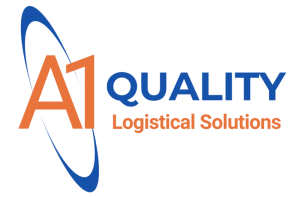A1 Quality Logistical Solutions

- By Haley
- July 3, 2025
Table of Contents
Key Highlights
- Emphasizes how KPIs play a pivotal role in driving operational excellence and enhancing customer satisfaction within 3PL and warehousing operations.
- Examines essential KPIs, ranging from basic metrics like order accuracy to advanced indicators such as dock-to-stock cycle time.
- Illustrates how effective KPI measurement systems lead to smarter decision-making and significant cost savings.
- Discusses the influence of KPIs on inventory management, order fulfillment, and broader customer service strategies.
- Offers practical advice for overcoming common challenges in KPI implementation, ensuring alignment with strategic objectives.
- Addresses frequently asked questions around KPI best practices to guide logistics providers and ecommerce businesses.
Introduction
Key performance indicators (KPIs) are the backbone of a good supply chain and strong logistics operations. For 3PL providers and warehousing companies, KPIs help make sure everyday tasks match bigger business goals. They bring clear and real results. With KPIs, logistics companies can make customer satisfaction better, smooth out how things get done, and keep inventory right.
When a company uses the right KPIs, it can reach operational excellence. It can also be ready for changes in the supply chain and make better choices. KPIs bring clear value to every activity in logistics operations. They also help everyone at work know what matters most.
Understanding KPIs in 3PL and Warehousing
Key performance indicators are key numbers that logistics providers use to check how well they are doing things. These numbers help support the supply chain and make it smooth. When logistics companies use tools like warehouse management systems, KPIs show real numbers for important day-to-day work. This helps businesses see what they need to fix and lets them keep their customers happy.
When KPIs are part of inventory management and other warehouse tasks, everything runs better. From inventory management to delivering orders, these numbers help things go the right way in the supply chain. Logistics companies get a clear look at how they are working, so they can make changes quickly. This helps them stay on track with their big thinking, strategic objectives, and other operational goals. All this helps keep customers happy and businesses moving forward.

What Are Key Performance Indicators (KPIs)?
Key Performance Indicators (KPIs) are numbers that help measure how well a business is meeting its main goals. In 3PL and warehousing operations, people use these metrics to check how good and fast their work is. KPIs help see if the company is making money or not. They also help organizations get the information they need to see what is working. With this, they can make changes when needed and keep getting better over time.
The Role of KPIs in Logistics and Warehousing
KPIs are important tools to help bring logistics operations in line with business goals. They let you track how things are working with KPI dashboards. These dashboards give you real-time updates about important things, such as inventory turnover and shipping times.
When you have good data from KPIs, making decisions gets much better. Business owners can change their plans based on real results, like order fulfillment or customer satisfaction scores. KPI dashboards also make it easy to look at the numbers. They help teams in logistics and warehousing work well together so that everyone moves toward the same goals.
These indicators are great for measuring operational excellence. They show you what is working and what needs to be changed. Logistics companies can act fast to fix problems because KPIs show them where to focus. In the end, KPIs help build a better, more efficient system. This helps the business grow and makes customers happier.
Why Measuring Performance Matters in 3PL Operations
Performance measurement is key to reaching success in 3PL, or third-party logistics, work. When you look at KPIs, you see how things are going and find where there are gaps in what you do. This helps you get better and move closer to operational excellence.
For example, by keeping track of the project success rate, you find out if your fulfillment work meets what your client needs. If you track things like transportation costs and customer satisfaction, you get numbers that help with better decisions. Because of this, 3PL companies can fine-tune how they do their work. This helps make the service more reliable and cuts down on mistakes.
Using KPIs to guide what you do, you can also find new ways to solve problems. When you use data for your choices, you can use your people or tools better and even grow your business at the right time. For any team in the logistics services field, using KPIs is part of making sure market needs get met and going forward with project success and operational excellence.
The Impact of KPIs on Operational Efficiency
KPIs play a big role in helping you reach operational excellence. They give real insights that help you make better decisions every day. Logistics companies can use these measurements to see things like how well they use warehouse space or track how many errors they have.
When you keep track of KPIs, your team can adjust logistics operations easily. You can follow things like inventory turnover or see how often customer orders go out right. This helps you find where you are doing well and where you need to improve. With this clear view, businesses can respond quickly to changes in the market, cut costs, and be more efficient. In the end, KPIs are key to better planning and stronger supply chain management for every company.

Enhancing Productivity Through KPI Tracking
Effective KPI tracking helps boost how well people work in logistics operations. In warehousing, it be common to track KPIs like order volumes and how well warehouse workers do their jobs. This helps keep the workflow at its best.
1. By watching order volumes, management can see how much inventory they can handle. It also helps know when demand goes up.
2. When you keep an eye on warehouse workers’ productivity, it lets managers see if someone needs more training or if tasks need to be moved to other people.
These tools also let logistics providers make the order fulfillment process faster and smoother. When you track KPIs, you use your resources in the right places, helping goods move the right way through the supply chain. Businesses count on this. To stay on top and ready to change, they need to keep productivity high by tracking KPIs in all parts of logistics operations. This is a key part of being successful.
Reducing Errors and Improving Accuracy
KPIs are important in cutting down mistakes and making sure there is accuracy in logistics operations. Order accuracy and customer orders come first because these matter for satisfaction rates and how people see the company.
When you track order accuracy, you get useful information about how things are being done. It becomes much easier to catch and fix errors like wrong shipments, which helps protect the customer experience. By also keeping track of satisfaction rates, you can make changes to how things work so they match what customers want again and again.
When companies use data from KPIs, their warehouse management systems can find and solve bottlenecks before they become a problem. This means there is better accuracy in every step, from picking stock to shipping out. It helps companies give good customer service and reach operational excellence. When you make less mistakes, it builds trust. This brings stronger ties to both clients and their customer base.
Optimizing Resource Allocation with KPIs
Using the right KPIs helps businesses turn data into cost savings and make better use of what they have. These numbers let people track things like warehouse space and how many workers are needed. That way, they don’t spend too much on things they do not need.
KPIs show which parts need more attention or if something should move around. For example, data tells you if the warehouse needs more space, or if it’s time to change the layout. Watching worker productivity helps staff stay flexible, especially when things get busy. This keeps errors down and doesn’t raise costs too much.
When people use these clear numbers, decisions stop being just guesses. The right KPIs help logistics providers get the best use of space, staff, and other resources. This is how they reach their strategic objectives and keep pushing for operational excellence.
Core KPIs Every 3PL and Warehouse Should Track
Tracking KPIs is important for keeping supply chain operations running well. It helps keep things smooth in warehouses and fulfillment centers. Using metrics like order accuracy rate and inventory turnover can let logistics providers see how they are doing compared to their set standards.
Good KPIs, such as on-time shipping, help keep business goals and the needs of customers on the same track. When you focus on these key numbers, warehouses can find ways to make work better, lower costs, and give better service. This makes these indicators very useful for any operation that is run by logistics needs and business goals in the supply chain.

Order Accuracy Rate
Order accuracy rate is key for smooth order fulfillment and high customer satisfaction. It shows the number of orders without mistakes. This helps a business to see trends and fix issues fast.
When a company gets high order accuracy, its customers trust it more. People are also likely to come back and order again. On the other hand, low accuracy points to problems in how things are done. This can hurt customer satisfaction. That is why keeping an eye on this step is so important. It helps the team spot errors early and stop making the same mistakes again.
Using new warehouse management software, logistics companies can make their work smoother and help improve order accuracy. Automated tools and real-time data can cut down on errors. This means better results and work for everyone. Watching this KPI helps you know how your fulfillment center is really doing. It also helps shape plans for your business in the future.
Inventory Turnover
Inventory turnover measures how well goods go from being stored to reaching sales channels or being used in making things. When there is a higher turnover, it means inventory management is working well. A lower rate could show that there are too many items in storage or raw materials that are not moving fast.
Making this KPI better helps with knowing the right time to get new products. It keeps money from just sitting in storage. Keeping track of inventory turnover is also good to see how fast things sell in different sales channels. This helps to forecast demand and plan how much to produce.
When inventory management works with warehouse systems, it gives a better view of how fast stock is moving. Automated systems send real-time updates. This helps managers to improve workflows and keep the right amount of stock. In the end, companies improve their supply chain by matching supply with what customers want and what is happening in the market.
On-Time Shipping and Delivery
On-time shipping and delivery show how well goods get to customers in the time frame promised. This key point is important to keep shipping costs low and to make the customer experience better.
When there is strong performance here, it means logistics steps, like transportation planning and order dispatch, are smooth. If deliveries are late, this can hurt trust and lower satisfaction rates. Customers may then go to other competing companies.
If fulfillment centers and warehouses focus on this key point, they can be seen as reliable. Using transportation services such as GPS tracking helps check accuracy and time. Warehouse management software helps keep orders ready to ship. By using these together, service quality gets better, and customers get what they order in the right time frame. This leads to higher customer satisfaction and lower shipping costs.
Advanced KPIs for Strategic Growth
Strategic KPIs help logistics companies see more than the basic numbers. They let you look ahead and focus on long-term revenue growth and hitting important business goals. Metrics like dock-to-stock cycle time help spot slow-downs. This means you can fix problems faster and get orders out more quickly.
These high-level indicators use real data to help you make better choices. When you include them in how you work, your supply chain can grow, keep your profit margins strong, and make sure every step fits your strategic objectives. Using strategic KPIs helps a company stay successful now and be ready for challenges that the future might bring.

Dock-to-Stock Cycle Time
Dock-to-stock cycle time checks how fast inventory moves from the dock into storage on shelves. This key number is important for improving the order fulfillment process and cutting problems in supply chain operations.
With warehouse management software, you can track the average resolution time for all incoming shipments. If you have a short dock-to-stock cycle, it means your process is smooth, and stock is ready for fast order fulfillment. This helps lower any downtime in how people work.
When you watch this number, you can find and fix problems, like if there are delays happening while unloading or if there are slow spots during scanning. Advanced warehouse management software also helps by using automation to collect data, so work is more accurate. This makes sure warehouses work at their best, making it easier to meet what customers want and keep up with supply chain needs.
Cost Per Order
Cost per order shows the total money a company spends to handle and send out one customer order. This number helps logistics companies see their profit margins and check how well their logistics operations are working. When businesses look at cost per order, they can spot new cost savings.
Keeping track of this number helps businesses make their work better. For example, changing the way they package things or fixing their shipping strategy can cut extra costs. This will help make the profit margins better. When cost per order is low and well-managed, it helps grow the net profit margin. It also makes sure that logistics operations help support the company’s big goals.
Cost Element | Impact on Cost Per Order |
Packaging Costs | Higher or bulk purchases for cost reduction |
Labor Expenses | Efficiency of warehouse workers |
Shipping Fees | Negotiated rates with transportation carriers |
By using KPI dashboards, companies can see where their money goes. This makes it easier to find waste and make plans for cost savings. They can use the info from these dashboards to spend less and keep their logistics operations running well.
Rate of Returns and Reverse Logistics
Tracking rate of returns and reverse logistics helps measure how well a company handles returned products. It is to see how good their customer service is. When you look at the returns data, you can find out what people do not like or what is wrong with the product. This helps to know ways to keep customers and make them happy.
If reverse logistics works well, you can process returns quickly and easily. This will not stop warehouse operations from running smoothly. Keeping this KPI high is important to have good satisfaction rates and to protect the customer experience.
Looking at this information shows why people send things back. It could be because of shipping mistakes or because the product is not right. When logistics providers know this, they can get better at sending the right orders and keeping the warehouse in order. If this is done well, it helps a company reach operational excellence and win the trust of their customers.
Implementing KPI Measurement Systems
To measure how well your team works, you need to set up clear KPI measurement systems that fit your operations. It is important to use warehouse management software to gather the right data. This helps you make better choices and work in a more efficient way. With this system, you can track different KPIs. These show patterns in order fulfillment, inventory management, and logistics operations.
KPI dashboards make it easier to watch your results. Business owners can use them to see how things are going compared to their main plans or strategic goals. It is good to check these systems often. Doing so helps keep your team focused on customer satisfaction, revenue growth, and reaching operational excellence.

Choosing the Right Technology for Data Collection
Choosing the right technology for collecting data is important if you want to measure key performance indicators well. Advanced systems like warehouse management software help with inventory management. They also make logistics operations easier and faster.
When you use KPI dashboards, you get real-time insights. This helps you make quick choices and handle customer satisfaction problems at once.
Connecting your data collection tools to the supply chain management processes lets you keep better track of order volumes and how many orders get filled. When a business makes use of the right technology, it can find ways to reach operational excellence. This helps to meet strategic goals and keep making things better across the whole organization.
Integrating Warehouse Management Systems (WMS)
The smart use of warehouse management systems (WMS) helps boost the speed and accuracy of logistics operations. When you use a WMS, it makes handling inventory management and order fulfillment much smoother. This can cut down on mistakes and save time in the process. With real-time tracking and more automation, you can collect and use data better to know how things are working.
This change makes logistics services easier for everyone. It also helps managers make informed choices. Because of this, your customers will feel better served, and profit margins can get higher. When warehouse workers have the right tools, they play a big part in reaching the company’s strategic goals.
Automating Reporting and Analysis
Using automation for reporting and analysis changes the way logistics operations check how well they are doing. When managers set up automated systems, they can see real-time data with KPI dashboards. This helps them make faster choices using data. There are fewer mistakes, and the data stays correct. This is key to staying ahead of others.
Also, teams can use automated reports to spot trends and learn new things. This makes it easier to manage inventory and helps with customer satisfaction. When analysis is faster, it helps the business act fast and be ready for changes in order volumes. This leads to better fulfillment steps and pushes for operational excellence.
Using KPIs to Drive Continuous Improvement
Using key performance indicators helps boost a culture where everyone tries to get better in logistics operations. These KPIs show the bottlenecks and where things are not working well. That way, businesses can make plans that improve order fulfillment and help with inventory management. When you set realistic benchmarks, the teams know what the strategic goals are. It also helps warehouse workers take more responsibility for their work. As these KPIs become an important part of decision making, they help organizations make better decisions. This leads to higher customer satisfaction and more revenue growth by making things better across all supply chain operations.

Identifying Bottlenecks and Process Weaknesses
Looking for the bottlenecks and weak spots in a process is key if you want to reach operational excellence. When you look at KPIs that focus on order fulfillment and inventory management, it becomes easier to find what slows things down and hurts customer satisfaction. It’s important to spot any area that moves slow, like in shipping or the way people talk to each other at work. This helps you make better choices that match business goals. Using the latest analytics in warehouse systems can show you what to fix to boost work and help logistics operations do better than the set service standards. Regularly watching these details helps you stay ahead and keep improving things over time in the supply chain.
Setting Realistic Benchmarks and Targets
Setting achievable goals and targets is important for managing KPIs well. The metrics need to match the company’s day-to-day skills and bigger plans. You must think about order fulfillment times and inventory management when choosing them too. When you set goals that are realistic, the business gets a clear connection between supply chain operations and customer satisfaction.
It is good to check these goals often. That way, they stay useful and match new changes in the market or in logistics services. Being able to change as needed gives you better choices and helps every part of warehousing and fulfillment get better over time.
Fostering a Culture of Accountability
Building a culture where everyone takes responsibility in logistics operations helps people want to do their jobs better, which leads to top performance. When warehouse workers and teams feel ownership over their roles, they become more responsible and are more likely to reach the strategic goals of the company. Checking how things are going often, by using different KPIs, helps everyone know what is expected and gives better ways to make decisions. Also, adding feedback steps to different parts of the work can help spot what is not working well. This can lead to better customer service and improved order fulfillment. When customers are happy, it shows how important it is to be responsible at every step of the supply chain.
How KPIs Enhance Customer Satisfaction
Effective measurement of performance has a big impact on customer satisfaction in logistics operations. Using KPIs like order fulfillment rates and average resolution time helps people find out where things can be better. It gives them a way to make their processes work better. Watching shipping costs and making sure there is a single point of contact can help to give a good customer experience. When businesses use service level agreements (SLAs) in their reports, they can keep their service steady. This strong focus on operational excellence helps keep customers loyal and leads to higher revenue growth.

Meeting and Exceeding SLAs (Service Level Agreements)
Setting up and sticking to SLAs is a good way to boost customer satisfaction. This helps make logistics operations work better too. When a company checks how their work measures against these goals, they can see where they need to get better at order fulfillment and customer service.
This makes it easier to fix problems fast, so there is less waiting time and a better customer experience. When companies do more than what people expect, they can make their customer base more loyal. They also stand out from the rest in the market. So, giving great service should be a main part of the plan for any business.
Reducing Lead Times for Clients
Reducing lead times is important to improve customer satisfaction and help supply chain operations run smoothly. When you use better logistics strategies, like faster order fulfillment and better inventory management, you can make deliveries quicker. The use of advanced warehouse management systems (WMS) helps track inventory and order volumes in real time, so you can make faster decisions. Building good relationships with logistics providers is also key. It makes your shipping strategy stronger and helps you deliver orders on time. By focusing on these things, businesses can meet or even go beyond what clients expect. This will build better customer retention and support revenue growth.
Improving Communication with Customers
Good communication with customers is important to improve their experience and increase satisfaction rates. When you use a strong warehouse management system, it helps make contact with people easier. The system gives fast updates on order fulfillment and shipping status to customers. Clear ways to get feedback from people can tell you what your customers need and want. You can also use automation tools to keep in touch with everyone. These tools help answer questions faster and lower the average resolution time. This way of working helps build trust and make stronger ties with your customer base. When you do this, it is good for operational excellence and revenue growth. If you talk better with your customers, you may see more people stay and a more loyal customer base.
Overcoming Challenges in KPI Implementation
Putting KPI measurement systems in place can bring many challenges. To get project success, the team needs to make sure data is accurate and steady. If the data is not reliable, the information the team uses to make decisions could be wrong. This can hurt operational excellence and lead to missed business goals.
Managing change is also important. Sometimes people in teams do not want things to be different. This can slow down progress and get in the way of new plans.
Teams should also look at the KPIs often. They need to change them if there are new market needs or if the year has some ups and downs. Making sure KPIs match the business goals helps the team stay on track.
Solving these problems makes the fulfillment process better. This makes customers happier and pushes customer satisfaction. Good processes also help revenue growth and make business success last longer.

Ensuring Data Accuracy and Consistency
Reliable data is the backbone of any good KPI measurement system. To get the right numbers, you need to keep your data clear and always the same. This helps leaders make smart choices, which is key for getting the most out of your logistics operations. To do this well, you should check your data often, use warehouse management software, and have strong steps for entering data.
Getting everyone, from warehouse workers to bosses, to care about data integrity helps stop mistakes. If you focus on being accurate, you can cut down on errors a lot. Precise KPIs give business owners what they need to see how they’re doing, to make supply chain operations work better, and to boost customer satisfaction by using facts and insights. This is how the supply chain and logistics operation reach true operational excellence.
Managing Change Within Teams
Getting used to new KPIs can be easy when team management is done well. Involving warehouse workers and logistics providers in the change helps everyone feel like a part of the team. This can lower pushback to the new ideas. It is important to clearly talk about the strategic goals and show why the new KPIs are needed. This helps everyone see what is important. Giving everyone regular training lets the team use inventory management tools and warehouse management systems with confidence. This makes sure the group understands and follows the new rules. When business owners are open and honest with their teams and work together, it is easier to change and improve. This way, the business can keep reaching for operational excellence and get better results in all the fulfillment steps.
Adjusting KPIs for Seasonal and Market Shifts
The way supply chain operations work needs to change as seasons and the market change. To keep up, people should often look at sales trends and order volumes. Then, you can adjust strategic objectives so they match what is happening now. This helps your plan stay up-to-date and in line with what is needed. If you use data from different logistics services, the adjustments you make can be more accurate. This lets you and your team make better choices. Plus, kpi dashboards give quick updates on shifts in what customers want and how orders are filled. With real-time info, your business can hold on to both operational excellence and customer satisfaction during different times and conditions.
Conclusion
Adding KPIs is key if you want to boost how well things run in 3PL and warehousing. These numbers help set and reach your company’s main goals. KPIs also give clear details, so you can make better choices for your business. When you have good ways to measure what’s working, it’s easier to make logistics operations smoother and handle inventory management well. This also helps keep customer satisfaction high, which can lead to customer loyalty. KPIs show where things could be better, so the team can keep making the supply chain stronger and meet what the market wants now. By making KPI systems a top focus, business owners put their companies in a good spot for revenue growth. They can also deal with problems faster and in a better way.
Frequently Asked Questions
What are the most critical KPIs for 3PL providers in the US?
The most important KPIs for 3PL providers in the US are order accuracy, inventory turnover, and delivery performance. Watching these numbers helps to make operations better. It also boosts customer satisfaction and lets companies use their resources in a smarter way. This is needed to stay competitive in the logistics industry.
How often should KPIs be reviewed and updated in warehousing?
KPIs in warehousing need to be checked every three months to make sure they still work well for the business. If there are big changes in how things are done or the market changes a lot, then you should check and update them more often. By doing regular reviews, you help the business and your team adjust and improve all the time. This makes it easier to keep the performance numbers in line with changing business goals and what your customers want.
Can KPIs help identify areas for automation in logistics?
Yes, KPIs can help spot where to use automation in the supply chain. They show you the points where things do not work well and where people keep doing the same task. When you look at the numbers from these KPIs, you see where the process slows down. This helps you find times to bring in new tech. By doing this, you make the work in the supply chain move smoother and help people get more done.

Haley serves as the Marketing Manager for A1 Quality Logistical Solutions. She joined A1QLS in 2023 with her prior experience gained with GXO and XPO Logistics.
